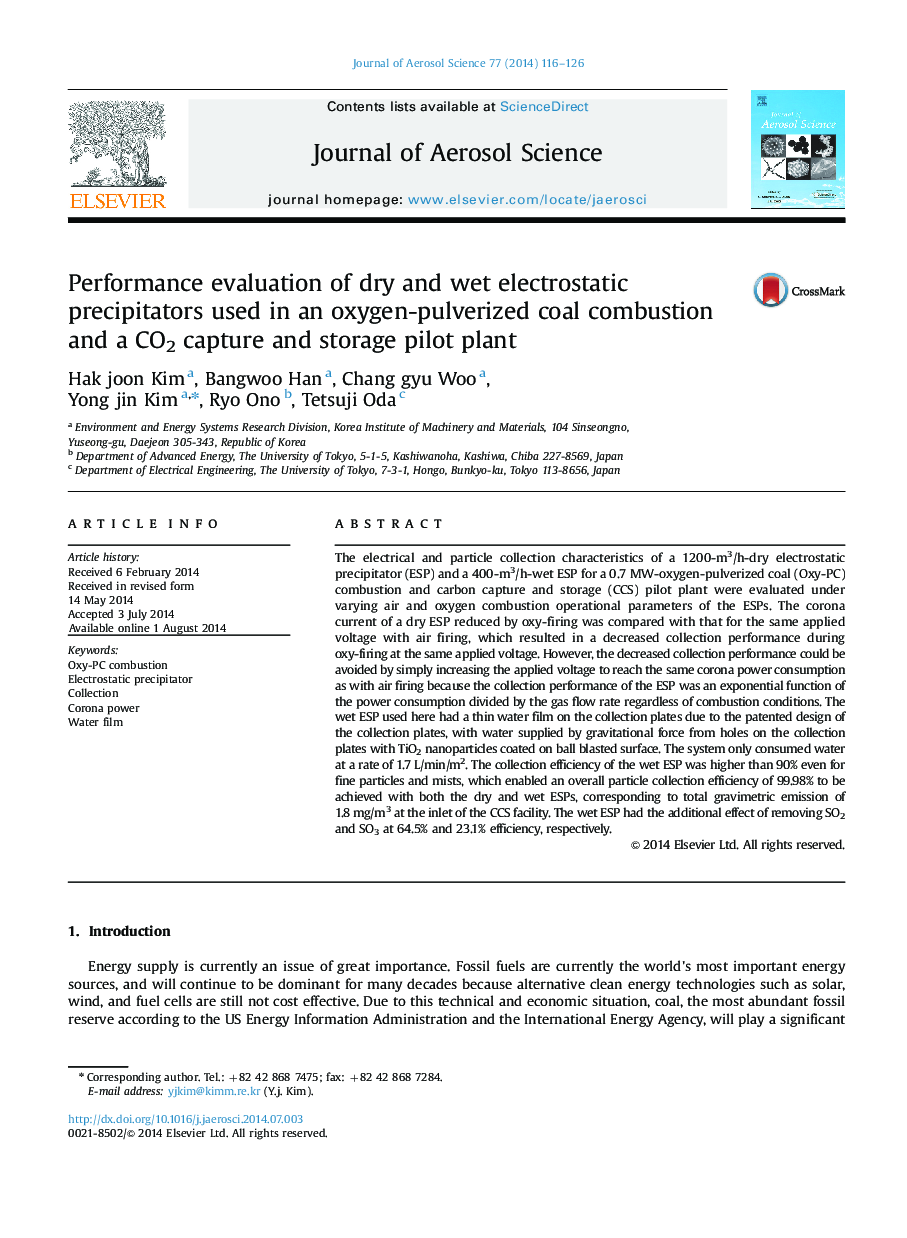| Article ID | Journal | Published Year | Pages | File Type |
|---|---|---|---|---|
| 4452369 | Journal of Aerosol Science | 2014 | 11 Pages |
•The characteristics of ESPs used in oxy-fuel combustion are evaluated.•The particle collection efficiency of a dry ESP depends on the specific power, regardless of combustion conditions.•A wet ESP with thin water films consumes only 1.7 L/min/m2 of water.•The combination of dry and wet ESPs is promising for efficient cleaning of oxy-fuel combustion.
The electrical and particle collection characteristics of a 1200-m3/h-dry electrostatic precipitator (ESP) and a 400-m3/h-wet ESP for a 0.7 MW-oxygen-pulverized coal (Oxy-PC) combustion and carbon capture and storage (CCS) pilot plant were evaluated under varying air and oxygen combustion operational parameters of the ESPs. The corona current of a dry ESP reduced by oxy-firing was compared with that for the same applied voltage with air firing, which resulted in a decreased collection performance during oxy-firing at the same applied voltage. However, the decreased collection performance could be avoided by simply increasing the applied voltage to reach the same corona power consumption as with air firing because the collection performance of the ESP was an exponential function of the power consumption divided by the gas flow rate regardless of combustion conditions. The wet ESP used here had a thin water film on the collection plates due to the patented design of the collection plates, with water supplied by gravitational force from holes on the collection plates with TiO2 nanoparticles coated on ball blasted surface. The system only consumed water at a rate of 1.7 L/min/m2. The collection efficiency of the wet ESP was higher than 90% even for fine particles and mists, which enabled an overall particle collection efficiency of 99.98% to be achieved with both the dry and wet ESPs, corresponding to total gravimetric emission of 1.8 mg/m3 at the inlet of the CCS facility. The wet ESP had the additional effect of removing SO2 and SO3 at 64.5% and 23.1% efficiency, respectively.
